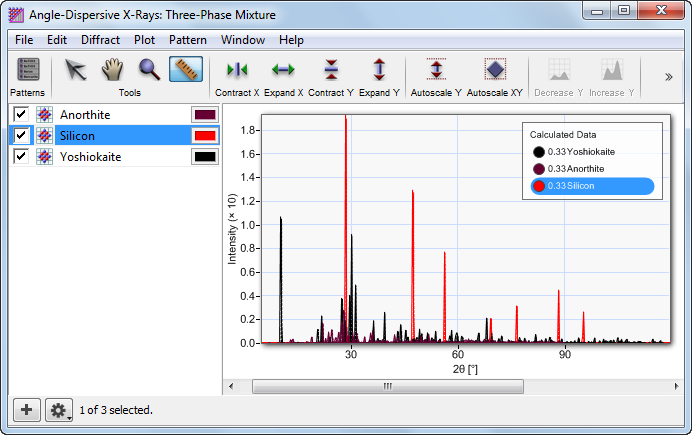

You can check your experimental data for impurity phases or other anomalies - or even attempt to identify an unknown phase using a match of observed and calculated data (the Structures list allows you to quickly scan through a list of ideal phases, relative to the observed data). When the observed data have been characterized, baseline and zero-error corrections can be applied interactively, and a residual graph/film displayed on screen (together with a sum-of-squares difference calculation).ĬrystalDiffract offers extensive plot control. You can select a pattern and choose from a wide range of plot styles. You can specify a precise plot range, or search for specific peaks. Scaling controls are provided for x and y axes, with a Magnify tool and auto-scaling option. You can also adjust the front-to-back ordering of multiple diffraction patterns, and automatically stack- or collapse the display.ĬrystalDiffract offers high-resolution printing, re-sampling simulated diffraction profiles to match your printer's resolution. As an alternative to printing, you can export diffraction traces as text files, in xy format, with your chosen x-axis resolution.ĬrystalDiffract lets you save your work as a self-contained "session" file, for quick and convenient access next time you use the program.

Crystaldiffract save for mac os x#
You can also export data files containing structural data, listings of custom-sorted diffraction data, structure factors, or diffraction profiles (e.g., for plotting in a spreadsheet or graphing program).ĬrystalDiffract is available in two separate versions, for Windows (XP/Vista/Windows 7/Windows 8), or for Mac OS X (including "Mountain Lion").


 0 kommentar(er)
0 kommentar(er)
